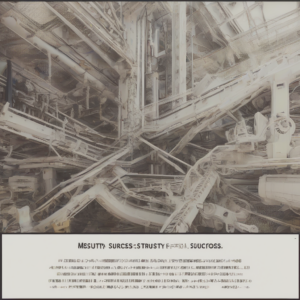CRM Industry Best Practices: A Comprehensive Guide to Maximizing Customer Relationships
The modern business landscape is fiercely competitive. Standing out requires more than just a great product or service; it demands exceptional customer relationship management (CRM). Implementing best practices in CRM isn’t just about adopting a software; it’s about transforming your business culture and processes to prioritize customer engagement and loyalty. This comprehensive guide delves into the key strategies and techniques to optimize your CRM efforts.
I. Defining Your CRM Goals and Strategy
Before diving into specific CRM functionalities, establishing clear objectives is paramount. What do you hope to achieve with your CRM system? Are you aiming to increase sales conversions, improve customer retention, enhance customer service, or streamline internal processes? Clearly defined goals will guide your CRM implementation and measure your success.
- Identify Key Performance Indicators (KPIs): Define measurable metrics to track your progress, such as customer lifetime value (CLTV), customer acquisition cost (CAC), conversion rates, and customer satisfaction (CSAT) scores.
- Target Audience Segmentation: Divide your customer base into meaningful segments based on demographics, purchasing behavior, and other relevant factors. This allows for targeted marketing and personalized communication.
- Develop a CRM Roadmap: Outline a phased implementation plan, including timelines, resource allocation, and training schedules. This structured approach ensures a smooth transition.
- Choose the Right CRM Software: Select a CRM system that aligns with your business needs, budget, and scalability requirements. Consider cloud-based solutions for flexibility and accessibility.
II. Data Management and Integration
The cornerstone of effective CRM is accurate and accessible data. Poor data quality can lead to inaccurate insights, wasted marketing efforts, and frustrated customers. Implementing robust data management practices is crucial.
- Data Cleansing and Validation: Regularly clean your database by removing duplicate entries, correcting inaccuracies, and updating outdated information. This ensures data integrity.
- Data Security and Privacy: Comply with all relevant data privacy regulations (e.g., GDPR, CCPA) to protect customer information and maintain trust.
- Data Integration: Integrate your CRM system with other business applications (e.g., marketing automation, e-commerce platforms, accounting software) to create a unified view of your customer data.
- Data Governance Policies: Establish clear policies and procedures for data access, usage, and security to maintain consistency and compliance.
III. Customer Relationship Building and Engagement
CRM is not simply about managing data; it’s about fostering strong customer relationships. Effective engagement strategies are essential for driving loyalty and repeat business.
- Personalized Communication: Tailor your communication to individual customer preferences and needs. Use data to personalize email marketing, website content, and other interactions.
- Omnichannel Engagement: Provide seamless customer experiences across all channels (e.g., email, phone, social media, chat). Ensure consistent messaging and branding across platforms.
- Proactive Customer Service: Anticipate customer needs and proactively address potential issues before they escalate. Use CRM data to identify at-risk customers and offer timely support.
- Feedback Mechanisms: Encourage customer feedback through surveys, reviews, and social media monitoring. Use feedback to improve products, services, and customer experiences.
- Loyalty Programs: Implement reward programs to incentivize repeat business and build customer loyalty. Offer exclusive discounts, early access to products, and personalized rewards.
IV. Sales and Marketing Optimization
CRM systems offer powerful tools to optimize sales and marketing processes. By leveraging CRM data, businesses can improve lead generation, conversion rates, and overall sales performance.
- Lead Scoring and Qualification: Prioritize leads based on their potential value. Use scoring models to identify high-potential leads and focus sales efforts on the most promising opportunities.
- Sales Pipeline Management: Track sales opportunities throughout the sales cycle. Identify bottlenecks and optimize processes to improve conversion rates.
- Marketing Campaign Management: Plan, execute, and track marketing campaigns using CRM data. Measure campaign performance and optimize strategies based on results.
- Sales Forecasting and Reporting: Use CRM data to forecast future sales and track key performance indicators (KPIs). Generate insightful reports to identify areas for improvement.
- Account-Based Marketing (ABM): Focus marketing efforts on key accounts to build strong relationships and increase sales. Use CRM data to personalize marketing messages and tailor outreach efforts.
V. Customer Service and Support Excellence
Exceptional customer service is a key differentiator in today’s market. CRM systems can significantly improve customer support efficiency and satisfaction.
- Case Management: Track and manage customer inquiries and support tickets effectively. Assign cases to appropriate agents and ensure timely resolution.
- Knowledge Base Integration: Provide easy access to self-service resources, such as FAQs and troubleshooting guides. Reduce the volume of support tickets by empowering customers to resolve issues independently.
- Automated Responses and Chatbots: Use automated responses and chatbots to handle common inquiries and provide instant support. Free up human agents to focus on more complex issues.
- Customer Feedback Collection and Analysis: Regularly collect customer feedback to identify areas for improvement in customer service. Analyze feedback to identify trends and patterns.
- Service Level Agreements (SLAs): Establish clear service level agreements (SLAs) to define response times and resolution targets. Monitor performance against SLAs to ensure customer satisfaction.
VI. Team Collaboration and Training
Effective CRM implementation relies on strong team collaboration and comprehensive training. Ensuring your team understands and utilizes the system effectively is crucial for success.
- Cross-Departmental Collaboration: Break down silos between departments (e.g., sales, marketing, customer service) and encourage information sharing through the CRM system.
- Role-Based Access Control: Restrict access to sensitive data based on individual roles and responsibilities. Maintain data security and privacy.
- Comprehensive Training Programs: Provide thorough training to all users on how to effectively use the CRM system. Include ongoing support and refresher courses.
- Regular System Updates and Maintenance: Keep the CRM system up-to-date with the latest features and security patches. Regularly back up data to prevent data loss.
- Performance Monitoring and Improvement: Track CRM system usage and identify areas for improvement. Regularly review processes and make adjustments as needed.
VII. Continuous Improvement and Adaptation
The CRM landscape is constantly evolving. To maximize the value of your CRM system, you need to embrace continuous improvement and adapt to changing customer needs and market trends.
- Regular System Reviews and Audits: Conduct regular reviews of your CRM system to assess its effectiveness and identify areas for improvement. Perform regular data audits to ensure data quality.
- Data Analytics and Reporting: Leverage CRM data analytics to gain insights into customer behavior and trends. Use this information to inform business decisions and improve strategies.
- Adapting to Emerging Technologies: Stay abreast of emerging technologies, such as AI and machine learning, and explore how they can be integrated into your CRM system to enhance functionality.
- Customer Feedback Incorporation: Continuously solicit and analyze customer feedback to identify areas for improvement in your CRM processes and strategies. Use feedback to refine your approach.
- Flexibility and Scalability: Choose a CRM system that can adapt to your business’s evolving needs. Ensure the system can scale to accommodate future growth.




